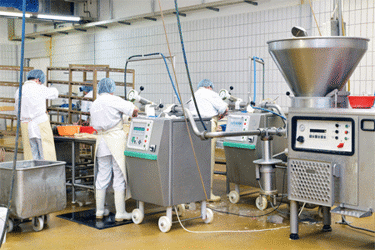EPA Will Face Fight From Meat Industry Over New Effluent Standards


As the leading environmental regulator in the country works to crack down on a notorious source of wastewater contaminants, a major industry faces the prospect of expensive compliance — and the regulating agency should be preparing for a fight.
“Proposed EPA standards to control slaughterhouse effluent aim to cut pollution in the Chesapeake Bay and other waterways, but meat and poultry producers will argue during public hearings this month that the planned rules are too costly,” Bloomberg Law reported. “Slaughterhouse owners will ‘rush’ Environmental Protection Agency officials with data showing the cost of compliance at public hearings.”
The U.S. EPA has been moving toward stricter standards for slaughterhouse effluent for months, recently detailing how it would utilize pollution control technologies to drive reductions in nitrogen, phosphorus, and other pollutants from the industry’s wastewater. These pollutants can foster the growth of toxic algae and otherwise harm the environment and source water quality.
“The proposed guidelines aim to cut the pollution by 100 million pounds annually, mainly from meat processors that slaughter at least 50 million pounds of meat or 100 million pounds of poultry annually,” according to Bloomberg Law. “They also establish pre-treatment standards for oil and grease and other pollutants. The rules would apply to about 850 of the 5,000 meat and poultry producers nationwide.”
Though nutrient pollution is causing increased issues and algal bloom is also being intensified by climate change, the rule updates are required by the Clean Water Act as a measure to ensure effluent guidelines (ELGs) keep pace with pollution control technology advancements.
“The first ELGs for facilities that process meat and poultry products were issued in 1974 and the last revision was in 2004,” per Southeast AgNet.
And even though a rule revision has been a long time coming, this requirement seems to be central to the meat industry’s upcoming legal pushback.
“Installing the best available technology means ‘to spend whatever cost is necessary to meet the effluent limits regardless of the benefits to water quality,’” Ethan Ware, a food industry legal representative, told Bloomberg Law. “So you have a scenario where the costs being spent are being driven by whatever is possible in engineering, not what is best for the environment.”
It seems the conflict between source water protection and the cost of ensuring it will soon be settled by a judge.
To read more about how the meat processing industry addresses nitrogen and phosphorus contamination, visit Water Online’s Nutrient Removal Solutions Center.
